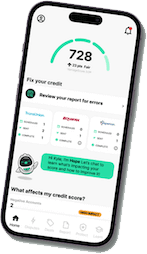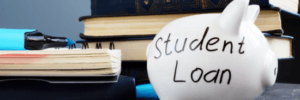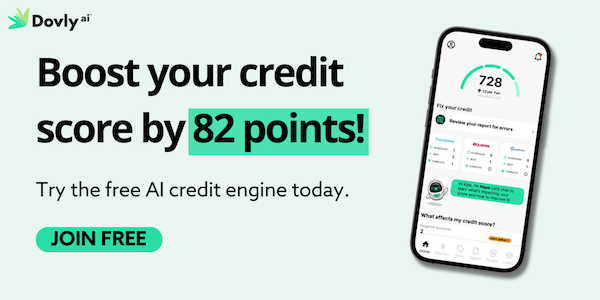What Happens If You Are Late on Student Loan Payment?

Missed a student loan payment? Life happens, but the consequences of falling behind can be serious. From late fees to a damaged credit score, understanding what happens when you miss a payment is crucial. This guide explains the impact of missed payments, what steps to take to get back on track, and options available to avoid long-term damage to your financial future.
Life happens—unexpected expenses, a job loss, or even just forgetting can lead to a missed student loan payment. But what happens when you fall behind? The consequences can range from minor things like late fees to serious setbacks, like a hit to your credit score or even wage garnishment.
Whether you have federal or private student loans, understanding the impact of missed payments is key. The good news is, there are ways to get your account back on track and avoid lasting financial damage. In this guide, we’ll explain what happens when you miss a payment, how to minimize the fallout, and what options are out there to help you stay on top of your loan.

How Late Can a Student Loan Payment Be?
Most student loan payments have a due date, and failing to meet it can trigger penalties. The exact timeline varies depending on whether you have federal student loans or private student loans. Here’s what you need to know:
- Federal Student Loans: Your loan servicer typically reports missed payments to credit bureaus after 90 days of delinquency if you are a federal student loan borrower.
- Private Student Loans: These lenders may report delinquency to credit bureaus as soon as 30 days after the due date.
Impact Missed Student Loan Payments
Once you miss a student loan payment, your account becomes delinquent. Here’s what happens if you are late on student loan payments:
- Sent reminders about the missed payment.
- Charged late fees, increasing the total amount you owe.
- Eventually the delinquency is reported to your credit, impacting your credit score.
One of the biggest risks of missing a student loan payment is the impact it can have on your credit score. When your loan servicer reports a missed payment, your credit score can take a serious hit. This drop can make it tougher to qualify for loans in the future, like a mortgage when you’re ready to buy a house. Plus, those late payments can stick around on your credit report for up to seven years, making it harder to get approved for credit down the road.
What Happens If You Continue to Miss Payments?
If you continue missing payments, the consequences become more severe:
- 90 Days Late: Will be reported to credit, impacting your credit score.
- 270 Days Late: Federal student loans go into default. Private loan default timelines vary though.
Understanding Default
Default happens when you stop making payments on your student loan for an extended period—usually around 270 days (about 9 months) for federal loans. Once your loan goes into default, it becomes a lot harder to handle, and you’ll lose access to important benefits. Here’s how to deal with default and the consequences you might face:
How to Resolve Default:
Rehabilitation: Make a series of on-time payments to remove the default status.
Consolidation: Combine multiple loans into a single loan with a new repayment plan.
Negotiate with Lenders: Some lenders may agree to settle for less than the full balance.
The Financial Consequences of Default:
Wage Garnishment: A portion of your wages could be taken to repay the debt.
Loss of Federal Benefits: You may lose eligibility for future student aid if you default on federal loans.
Increased Debt: Interest continues to add up, making your loan balance grow over time.
Legal Consequences: Private lenders may take legal action to recover the debt.
Options If You Can’t Make Payments
If you’re struggling to keep up with your student loan payments, it’s important to take action before the situation worsens.
One option is to explore Income-Driven Repayment Plans. These plans adjust your monthly payments based on your income and family size, helping to make your payments more manageable.
If you’re facing temporary financial hardship, you might consider Forbearance or Deferment, both of which can temporarily pause or reduce your payments.
Another option is Loan Consolidation, where you can combine multiple federal student loans into one, simplifying your repayment plan.
Finally, if you have private loans, Refinancing could be a good choice. Refinancing might allow you to secure a better interest rate, potentially lowering your monthly payments and saving you money over time.
How to Get Back on Track
If you’ve missed a payment, here’s what you can do to get back on track:
- Reach out to Your Loan Servicer
Reach out to your loan servicer to discuss options. They can help you find ways to avoid further delinquency or default. - Enroll in a Repayment Plan
Consider enrolling in an income-driven repayment plan. These plans adjust your monthly payment according to your income and family size, making it easier to manage your payments. - Apply for Forbearance or Deferment
You may be able to apply for forbearance or deferment. These options temporarily pause or reduce your payments, providing some breathing room. - Make a Partial Payment
Even if you can’t pay the full amount, making a partial payment can prevent further penalties and keep your loan from going into worse delinquency.
How to Avoid Late Student Loan Payments
Prevent late payments from the start with these proactive steps:
Set Up Auto-Pay: Most servicers offer interest rate reductions for automatic payments. Plus, you’ll never miss a due date!
Create a Budget: Plan for your student loan payments and ensure they’re a priority in your monthly budget.
Monitor Your Loan Status: Regularly check your loan account to confirm payments are processed correctly.
Build an Emergency Fund: Having savings to fall back on can help cover payments during financial setbacks.
Understanding Loan Forgiveness or Discharge
Loan forgiveness or discharge means your student loan debt is completely wiped out, usually because of specific situations, like working in public service or dealing with a permanent disability. Recently, the Biden administration has made big changes to expand and simplify federal student loan forgiveness programs, making it easier for more people to qualify.
Public Service Loan Forgiveness (PSLF)
The PSLF for example, allows for loan forgiveness after making 120 payments while working in a qualifying public service job. With ongoing updates to eligibility, more borrowers may qualify for forgiveness than before.
Total and Permanent Disability Discharge
If you become totally and permanently disabled and are unable to work, you may qualify for a discharge of your federal student loans, meaning you no longer need to repay them.
Bankruptcy Discharge
Though rare, bankruptcy discharge is possible in extreme situations. If you can prove that repaying your loans would cause “undue hardship,” some federal and private loans may be forgiven through bankruptcy.
Conclusion
Late student loan payments can have serious consequences, but there are options available to help you stay on track. If you’re struggling, take action now—reach out to your loan servicer, explore repayment plans, and stay informed on your eligibility for assistance.
At Dovly, we help borrowers take control of their credit. If a missed student loan payment has impacted your credit score, our AI-powered credit engine can help you dispute inaccurate information and improve your credit health.
Sign up today and take charge of your financial future!
Frequently Asked Questions




